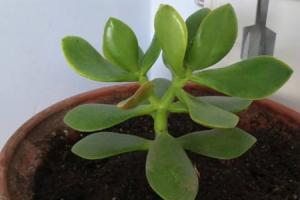Introduction
Riparian buffers are areas of land alongside water bodies such as rivers, lakes, and streams. These areas are covered with vegetation, mainly trees, and act as a protective shield by filtering pollutants and excess nutrients before they reach the water body. Planting riparian buffers is an effective way to prevent soil erosion, improve water quality, and restore habitats for aquatic wildlife. However, how many trees survive after planting riparian buffers is a question that needs to be addressed to determine the efficiency of this conservation strategy.
Factors Affecting Tree Survival in Riparian Buffers
Several factors can affect the survival rate of trees planted in riparian buffers. One of the most crucial factors is the species of tree planted. Some tree species are more suited to riparian environments than others. Trees with deep roots, like oak and maple, are better at accessing water than shallow-rooted species like willow and poplar. Another important factor is the quality of planting material. Trees that have been grown from seeds or cuttings locally adapted to the riparian environment have a better chance of survival. Tree size, planting density, and site preparation also play a role in determining tree survival in riparian buffers.
Studies on Tree Survival in Riparian Buffers
Several studies have evaluated the survival rate of trees planted in riparian buffers. A study conducted in Oregon found that after three years, the survival rate of trees ranged from 61% to 91%, depending on the species planted. Another study conducted in Iowa found a survival rate of 87% after five years of tree planting. However, in some cases, the survival rate is lower than expected. A study conducted in New Zealand found that only 45% of the planted trees survived three years after planting in a riparian buffer.
Reasons for Low Tree Survival in Riparian Buffers
There are several reasons why the survival rate of trees planted in riparian buffers may be low. One reason is the competition for resources, mainly water and nutrients, from other vegetation in the buffer. In some cases, invasive plant species can outcompete the planted trees for resources. Another reason is the suboptimal growing conditions, such as waterlogging, flooding, and drought. Finally, human disturbance, such as grazing and mowing, can also reduce tree survival in riparian buffers.
Strategies to Improve Tree Survival in Riparian Buffers
To improve the survival rate of trees planted in riparian buffers, several strategies can be employed. One strategy is to use locally sourced planting material, such as seeds or cuttings, adapted to the riparian environment. Another strategy is to use species with deep roots that are better at accessing water and nutrients. Adequate site preparation, such as weed control and soil amendment, can also improve tree survival. Finally, reducing human disturbance and managing invasive species can also enhance tree survival in riparian buffers.
Conclusion
Planting riparian buffers is an effective conservation strategy for improving water quality, preventing soil erosion, and restoring habitats for aquatic wildlife. However, the survival rate of trees planted in riparian buffers varies depending on various factors, such as species, planting density, site preparation, and competition with other vegetation. To improve tree survival in riparian buffers, using locally sourced planting material, selecting appropriate tree species, and managing invasive species are some of the strategies that can be employed. By implementing these strategies, we can ensure that more trees survive after planting riparian buffers, and the benefits of this conservation strategy can be fully realized.

 how many times do yo...
how many times do yo... how many planted tre...
how many planted tre... how many pine trees ...
how many pine trees ... how many pecan trees...
how many pecan trees... how many plants comp...
how many plants comp... how many plants can ...
how many plants can ... how many plants and ...
how many plants and ... how many pepper plan...
how many pepper plan...



























